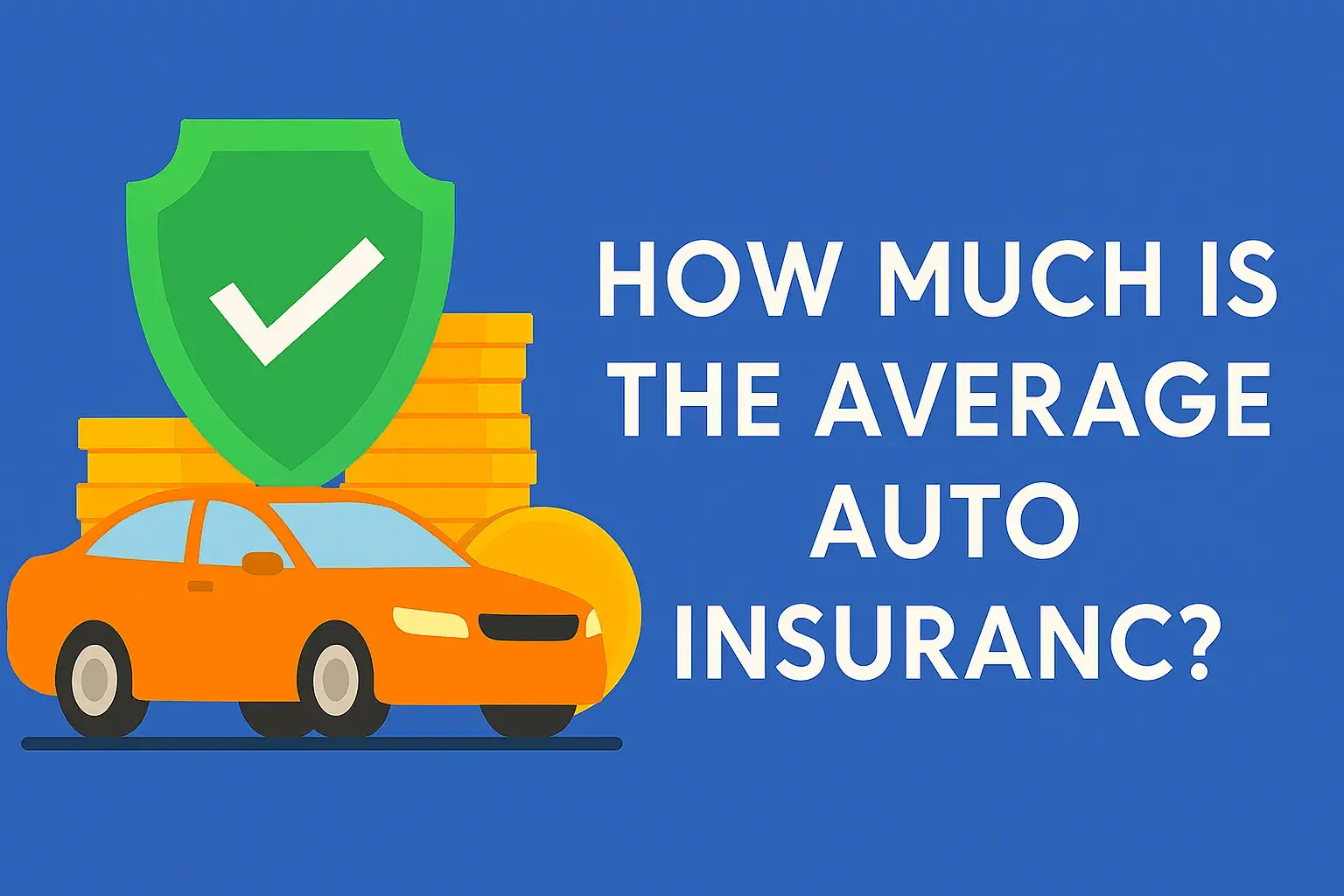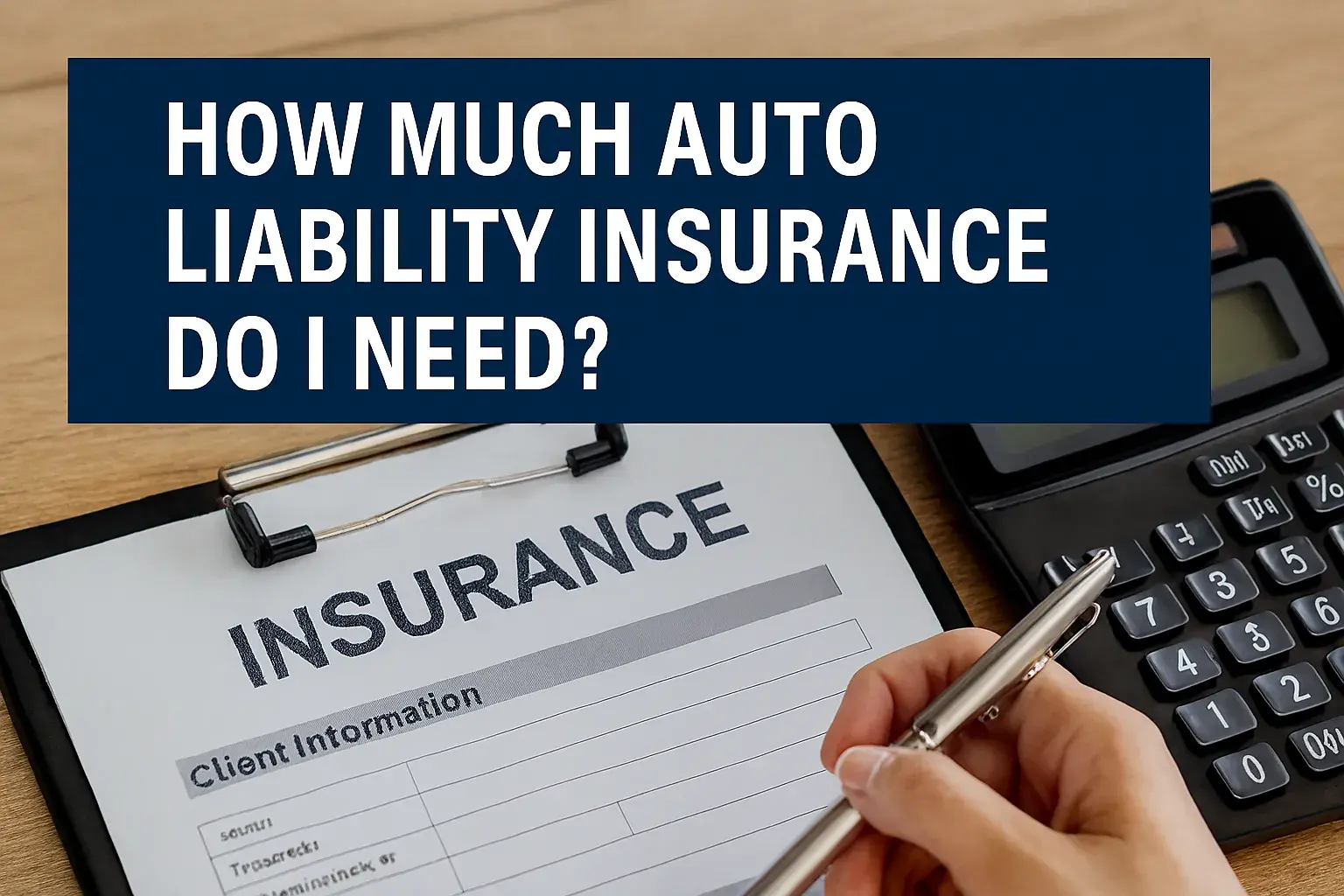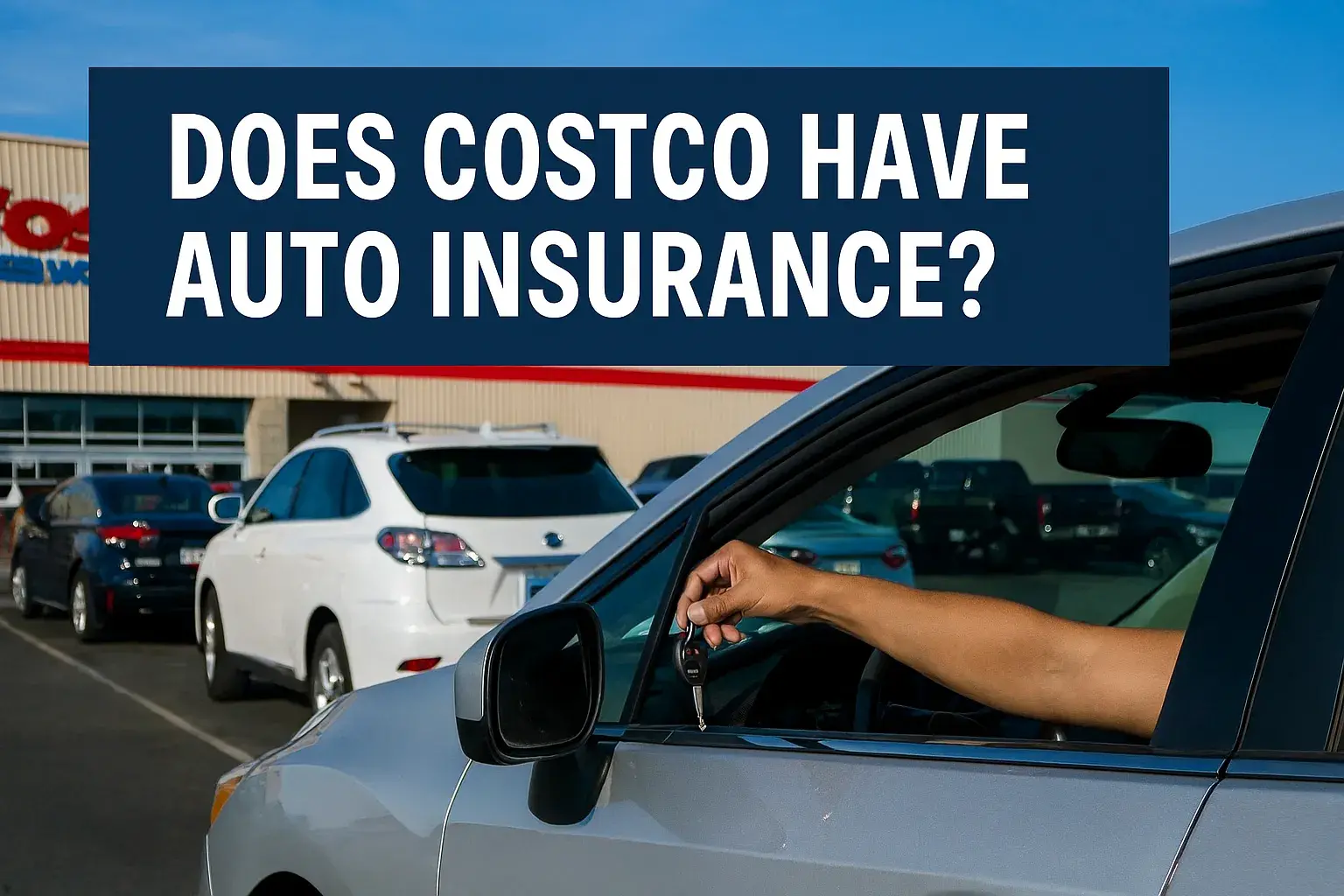01
Oct

Let's be honest: for most drivers, the monthly auto insurance bill is a line item we pay without fully understanding why the number is what it is. You might be a new driver buying your first policy or a seasoned one reviewing your renewal notice, asking the same fundamental question: "How much is auto insurance per month, and is what I'm paying fair?"
Auto insurance is a contract between you and an insurance company where you pay a premium, and in return, they agree to cover specific financial losses resulting from an accident or other covered event. Your monthly premium is simply your annual premium divided by twelve, often with a small service fee for the installment plan. Understanding this cost is crucial because it's a significant part of your budgeting, and finding the right rate can save you hundreds of dollars a year.
The critical thing to know is that there is no single "standard" price. Your monthly car insurance cost is as unique as your fingerprint, calculated based on a complex algorithm that assesses your personal risk profile. Factors like your age, where you live, your driving history, and even your credit score all play a role in determining your final rate. In this comprehensive guide, we'll peel back the layers, providing you with national and state averages, a deep dive into the rating factors, and proven strategies to lower your monthly auto insurance payment.
National Averages: What Does the Typical American Pay?
Before we get into the specifics of your situation, it's helpful to look at the broader picture. According to recent 2024/2025 data from industry leaders like the Insurance Information Institute (III) and Quadrant Information Services, the average cost of car insurance in the U.S. is approximately $180 to $220 per month for a full coverage policy. For a minimum liability policy, the national average drops to roughly $60 to $80 per month.
However, these are just averages. Your actual cost can be significantly higher or lower. Let's break it down by some key demographics.
Average Monthly Car Insurance by State
Where you live is one of the most significant factors. States with dense urban populations, high repair costs, and higher rates of uninsured drivers typically have the highest premiums.
| State | Average Monthly Full Coverage | Average Monthly Minimum Liability |
|---|---|---|
| Michigan | ~$320 - $400 | ~$100 - $150 |
| Florida | ~$280 - $350 | ~$110 - $140 |
| Louisiana | ~$270 - $330 | ~$90 - $120 |
| New York | ~$250 - $310 | ~$90 - $120 |
| California | ~$200 - $250 | ~$70 - $90 |
| National Average | ~$180 - $220 | ~$60 - $80 |
| Maine | ~$110 - $140 | ~$40 - $60 |
| Vermont | ~$110 - $140 | ~$40 - $60 |
| Ohio | ~$130 - $160 | ~$50 - $70 |
| Iowa | ~$120 - $150 | ~$40 - $60 |
*Source: Based on 2024/2025 aggregated industry data. Prices are estimates for a single driver with a clean record.*
Average Monthly Cost by Age and Driving Experience
Inexperience and statistical risk make a dramatic difference.
-
Teens (16-19): $400 - $700+ per month. This is the most expensive group due to their high risk of accidents.
-
Young Adults (20-24): $250 - $400 per month. Rates begin to drop but remain high.
-
Adults (25-60): $150 - $220 per month. This is typically the most stable and lower-cost period.
-
Seniors (65+): $180 - $260 per month. Rates may begin to creep up again due to factors like vision and reaction time.
The Key Factors That Determine Your Monthly Auto Insurance Bill
Insurance companies are in the business of risk management. Your monthly premium is their best estimate of how likely you are to file a claim. They use decades of historical data to weigh these factors. Understanding them is the first step to controlling your costs.
1. Age & Driving Experience
As seen in the averages, age is a proxy for experience. A 45-year-old with 25 years of driving experience is statistically far less likely to cause an accident than a 17-year-old with less than a year on the road. This is why adding a teen to a policy can cause it to double or even triple.
2. Location (State, City, and Even Your ZIP Code)
Your geographic location impacts your rate in several ways:
-
State Regulations: Each state has its own minimum liability requirements and insurance laws (no-fault vs. tort states), which directly affect cost.
-
Urban vs. Rural: Living in a major city like Detroit, Miami, or Philadelphia means a higher risk of accidents, theft, and vandalism, leading to higher premiums than in a rural town.
-
Local Repair Costs: If you live in an area where auto body labor and parts are expensive, your comprehensive and collision coverage will cost more.
3. Your Vehicle's Make, Model, and Year
The car you drive sends a clear signal to insurers.
-
Cost to Repair: A luxury vehicle with specialized parts (e.g., BMW, Mercedes) will be more expensive to insure than a common family sedan (e.g., Honda Accord, Toyota Camry).
-
Safety Ratings: Cars with top safety picks from the IIHS (Insurance Institute for Highway Safety) often qualify for discounts.
-
Theft Rates: If your car model is a frequent target for thieves, your comprehensive premium will be higher.
-
Performance: High-performance sports cars (e.g., Chevrolet Corvette, Ford Mustang GT) are correlated with riskier driving and higher claim amounts.
4. Your Driving Record (The "MVR")
Your Motor Vehicle Record (MVR) is a report card for insurers. A clean record with no accidents or traffic violations is your ticket to the lowest rates. Here’s how infractions typically impact your monthly car insurance cost:
-
Speeding Ticket (15+ mph over): 20-30% increase.
-
At-Fault Accident: 30-50% increase.
-
DUI/DWI: Can double your premium or lead to a non-renewal.
These surcharges can last for 3-5 years from the incident date.
5. Your Credit-Based Insurance Score
In most states (except California, Hawaii, and Massachusetts), insurers use a credit-based insurance score. Data shows a correlation between good credit and responsible driving behavior. Someone with excellent credit could pay hundreds less per year than an identical driver with poor credit.
6. Coverage Types, Limits, and Deductibles
This is the part of the cost you have the most direct control over.
-
Higher Liability Limits: Choosing state minimums (e.g., 25/50/25) is cheap but offers poor protection. Increasing to 100/300/100 provides much better asset protection but costs more per month.
-
Comprehensive & Collision (Full Coverage): Adding these coverages significantly increases your premium. Your deductible—the amount you pay out-of-pocket before insurance kicks in—also plays a role. A $500 deductible will have a higher monthly premium than a $1,000 deductible.
7. Discounts You Qualify For
Insurers offer a myriad of discounts. Are you taking advantage of them?
-
Multi-Policy (Bundling): Combining your auto and home/renters insurance.
-
Multi-Car: Insuring more than one vehicle on the same policy.
-
Good Driver: For maintaining a clean record for a set period (e.g., 3-5 years).
-
Pay-in-Full: Paying your annual premium upfront instead of monthly.
-
Safety Features: For anti-lock brakes, airbags, and anti-theft devices.
A Detailed Breakdown by Coverage Type
The type of coverage you select is the single biggest lever you can pull to change your monthly bill. Let's define the common policy types and their associated costs.
Minimum Liability Coverage
This is the bare minimum required by your state law. It does not cover damage to your own vehicle.
-
What it covers: Bodily injury and property damage you cause to others.
-
Sample Monthly Cost: $50 - $100 (highly state-dependent).
-
Who it's for: Drivers with very old cars of low value who are primarily concerned with meeting legal requirements.
Full Coverage Auto Insurance
This is a common term for a policy that includes liability plus Comprehensive and Collision coverage.
-
What it covers: Damage to others + damage to your own car from accidents (Collision) and non-collision events like theft, fire, or weather (Comprehensive).
-
Sample Monthly Cost: $150 - $250+ (the national average hovers around $200).
-
Who it's for: Almost everyone, especially those with a car loan or lease (lenders require it), or anyone with a vehicle that would be expensive to replace out-of-pocket.
Comprehensive & Collision (Standalone)
While usually part of a "full coverage" package, it's helpful to think of them separately.
-
Comprehensive: Covers your car against theft, vandalism, fire, hail, falling objects, and animal collisions. Sample Monthly Cost: $20 - $40.
-
Collision: Covers your car in an accident with another vehicle or object, regardless of fault. Sample Monthly Cost: $30 - $60.
The cost of these is heavily influenced by your car's value and your chosen deductible.
How to Lower Your Monthly Auto Insurance Cost: 6 Actionable Tips
Feeling like your premium is too high? You have more power than you think. Here are proven strategies to reduce your bill.
1. Shop Around and Compare Quotes Annually
This is the #1 most effective way to save money. Loyalty often does not pay in the insurance world. Different companies use different algorithms and target different customer profiles. A company that's expensive for a 25-year-old might be cheap for a 65-year-old. You should get quotes from at least 3-5 different providers every year. Read more about comparing the best car insurance companies here.
2. Increase Your Deductible
If you have a healthy emergency fund, consider raising your comprehensive and collision deductible from $500 to $1,000. This can lower the monthly cost of those coverages by 15% or more. Just be sure you can afford the higher out-of-pocket cost if you need to file a claim.
3. Bundle Your Insurance Policies
Most major insurers offer a significant discount (often 10-20%) if you purchase both your auto and homeowners or renters insurance from them. It simplifies your life and saves you money.
4. Maintain a Clean Driving Record
This is a long-term strategy that pays massive dividends. Avoiding speeding tickets and at-fault accidents is the best way to keep your base premium low and avoid costly surcharges.
5. Ask About Every Possible Discount
Don't be shy. Call your agent or representative and ask for a "discount review." Common, often-overlooked discounts include:
-
Paperless/Pre-pay Discount
-
Good Student Discount (for young drivers with a B average or better)
-
Defensive Driving Course Discount (especially for seniors)
-
Low Mileage Discount
-
Professional or Alumni Group Discounts
6. Consider Usage-Based or Telematics Programs
Programs like Progressive's Snapshot, Allstate's Drivewise, or State Farm's Drive Safe & Save can be excellent for safe, low-mileage drivers. You plug a device into your car or use a mobile app that tracks your driving habits (mileage, braking, speed, time of day). Safe driving can lead to discounts of up to 20-30%.
Auto Insurance Monthly Cost by Company
While your personal profile dictates the final price, some companies are consistently competitive for certain demographics. Here’s a general comparison of average monthly rates for a full coverage policy from major national carriers for a single driver with a clean record.
| Insurance Company | Estimated Average Monthly Cost (Full Coverage) | Key Audience & Notes |
|---|---|---|
| GEICO | ~$160 - $200 | Often very competitive for drivers with clean records and good credit. Strong online experience. |
| State Farm | ~$170 - $210 | Largest auto insurer in the U.S. Great for bundling and those who prefer a local agent. |
| Progressive | ~$165 - $205 | Known for competitive rates for high-risk drivers and its Snapshot telematics program. |
| USAA | ~$140 - $170 | Exclusively for military members, veterans, and their families. Consistently the lowest rates. |
| Allstate | ~$190 - $240 | Generally higher premiums, but it offers a wide network of agents and numerous discount options. |
| Farmers | ~$185 - $235 | Strong regional presence; good for those seeking personalized service from an agent. |
Disclaimer: These are national estimates. Your actual quote will vary dramatically.
Common Mistakes That Inflate Your Monthly Premium
Sometimes, it's what you don't do that costs you money. Avoid these common pitfalls.
-
"Set It and Forget It" Mentality: Failing to shop around at renewal is the biggest financial mistake. Your current company will rarely lower your rate out of the blue.
-
Letting Your Coverage Lapse: A gap in insurance coverage is a major red flag for insurers, signaling financial instability and significantly increasing your future rates.
-
Buying Only State-Minimum Liability: While cheap upfront, this can be financially catastrophic if you cause a serious accident and are personally sued for damages exceeding your low limits.
-
Over-Insuring an Old Car: Paying for comprehensive and collision coverage on a car worth less than $3,000-$4,000 often doesn't make financial sense. The most you could get in a total loss is the car's actual cash value, minus your deductible.
-
Not Updating Your Policy Lifecycle: Forgetting to remove a young driver who has moved out, not reporting a reduction in annual mileage, or failing to remove a paid-off car loan can cost you money.
Conclusion: Taking Control of Your Auto Insurance Costs
So, how much is auto insurance per month? As we've seen, the answer is complex and deeply personal. The national average provides a benchmark, but your unique combination of age, location, vehicle, and driving history will determine your final rate.
The key takeaways are clear:
-
There is no one-size-fits-all price. Your premium is a custom calculation.
-
You have significant control. By maintaining a clean record, choosing your coverages and deductibles wisely, and actively seeking discounts, you can exert downward pressure on your costs.
-
Shopping around is non-negotiable. The most powerful tool in your arsenal is to compare quotes from multiple companies regularly.
Don't be a passive payer of your monthly bill. Take an hour this week to review your policy, gather your information, and get new quotes. A small investment of time can lead to significant savings, putting money back in your pocket every single month.
Frequently Asked Questions (FAQ)
1. What is the average monthly cost of car insurance in 2025?
The national average for a full coverage policy is between $180 and $220 per month. For minimum liability coverage, the average is between $60 and $80 per month.
2. How much is auto insurance per month for a new driver (16-18 years old)?
New drivers face the highest costs due to their inexperience. A 16-year-old can be expected to pay $400 to $700 or more per month to be added to their parents' policy. Rates are slightly lower for 18-year-olds but still very high.
3. Why is my monthly car insurance so high?
Common reasons for a high premium include a recent accident or ticket, poor credit, a young driver on the policy, living in a high-cost urban area, driving a high-risk or luxury vehicle, or carrying low deductibles. The best way to diagnose the issue is to review your policy's "declarations page" and speak with your agent.
4. How much is full coverage auto insurance monthly?
"Full coverage" (liability + comprehensive + collision) averages $180-$220/month nationally. However, for a single 35-year-old driver with a good record in a low-cost state, it could be as low as $120/month, while a young driver in Michigan could pay over $400/month.
5. Is it cheaper to pay for car insurance monthly or every 6 months?
Paying in full every six or twelve months is almost always cheaper. Insurers often charge "installment fees" of $3-$10 per month for the convenience of monthly payments. Paying upfront avoids these fees and can sometimes come with an additional "pay-in-full" discount.
6. How does my credit score affect my monthly premium?
In most states, insurers use a credit-based insurance score. Statistically, drivers with higher scores file fewer and less costly claims. Therefore, someone with excellent credit (750+) will pay a significantly lower monthly premium than someone with a poor credit score (600 or below), all other factors being equal.
7. Which company has the cheapest monthly car insurance?
There is no single "cheapest" company for everyone. USAA is the most affordable for those who qualify. For the general public, GEICO, State Farm, and Progressive often offer the most competitive rates, but it depends entirely on your personal risk profile. You must compare quotes to find your cheapest option.
8. How can I estimate my monthly auto insurance cost before I buy a car?
Before you commit to a new car, call your insurance agent or get an online quote using the specific Vehicle Identification Number (VIN). This will give you an accurate estimate of the insurance cost, which can be a crucial factor in your total ownership budget.
9. Does my marital status affect my monthly car insurance rate?
Yes. Statistically, married drivers are involved in fewer accidents than single drivers. Getting married can often lead to a 5-10% reduction in your premium.
10. How much does a speeding ticket increase my monthly premium?
A single speeding ticket can increase your monthly car insurance cost by 20-30% on average when your policy renews. This surcharge can last for 3-5 years, making that ticket a very expensive mistake.
11. What is the minimum car insurance I need?
The minimum is your state's required liability limits. However, most financial experts strongly advise purchasing more than the minimum to protect your personal assets in case you are at fault in a serious accident.
12. Can I get car insurance with no money down monthly?
Some companies offer "no money down" plans, but they are not truly free. You are essentially financing the entire premium and will still have your first monthly payment due immediately. These plans often have higher fees or interest, making them more expensive in the long run.



